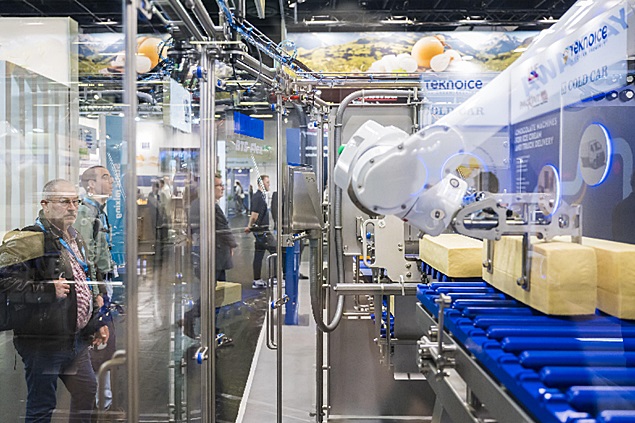1191

Due to advancements in optical technologies, many quality control and assurance tasks can now be solved in real-time. Artificial intelligence and deep learning algorithms are thus playing an increasingly important role, as recently demonstrated at AnugaFoodTech.
Quality Control
In the food industry, quality control with its classical methods of analysis and wet chemical processes is still very widespread. This takes place in laboratories, where a sample is taken for each batch. Products that do not meet the specifications are held back.
Therefore, there is often a heterogeneous environment of analysis devices, software tools, and processes present in the company. Devices are only connected in individual cases through operating software with a central laboratory information and management system (LIMS).
Data is transferred with USB sticks and Excel documents or, less ideally, printed out and handed over manually - such a procedure in times of increasing digitization is difficult to practice.
The Key to Better Products
In addition to this, samples need to be taken during ongoing production under strict hygiene conditions, which proves to be particularly challenging in closed processes.
"Especially regarding trends such as the Internet of Things and Big Data, different processes and structures in quality assurance need to be adapted in food processing companies," says Matthias Schlüter, Director of Anuga FoodTec.
Automation solutions and process analysis technologies (PAT), both areas of interest at the fair in Cologne, are key in this regard. "Visitors find a comprehensive offer in segments for qualitative and quantitative analysis in laboratories and processes at the exhibitors' stands," according to Schlüter.
With a PAT-based approach, familiar measurement parameters from the laboratory are recorded directly in the production process by analysis instruments.
From there, values are transferred to the process control system, which can be integrated on the device side in an Industry 4.0 concept. The stated goal: to ensure from the outset a food production within specifications that avoids product losses and helps reduce costs.
In-line Analysis of Ingredients
In accordance with this premise, near-infrared spectroscopy (NIR) spectrometers have evolved into reliable monitoring instruments at all stages of food production.
The mathematical models needed for evaluating spectroscopic results are stored in devices, meaning they combine the probe and spectrometer into one apparatus. With them, relevant parameters for quality, such as dry matter content, sugar, protein, and fat can be determined directly on the production line - without contact and without needing to take samples.
At the same time, defective batches can be avoided since deviant values are recognized in time, and not only after laboratory analysis.
Cooking oil manufacturers can thus define the oil content of raw materials even before pressing? The same applies in the dairy industry, for example, for yogurt production. Here, the fructose content, which can fluctuate in processed fruits depending on the type and ripeness stage, can be determined.
Instead of intensive time-consuming determination via the refractive index, spectroscopic measurement in-line via the reflection probe ensures the best possible quality before filling. Process analysis technology thus paves the way for automatic batch approval.
It's ultimately about increasing yields, and that with the least energy consumption. If, for example, the desired level of drying of milk powder for baby food has been reached, there is no need to apply heat to the process.
Artificial Intelligence and Quality Control
Innovative solutions, as found at Anuga FoodTec, aid food manufacturers in recognizing foreign bodies, determining fill levels, or the integrity of packaging in modified atmosphere. It is important that production time is not extended as a result of the measurement procedure.
Contactless measurement procedures are primarily used for this reason. Also, image processing software must calculate results in real-time so that a defective product can be immediately ejected.
The fact that artificial intelligence is becoming increasingly important is evident even on the fairground in Cologne. Optical processes with deep learning are increasingly available on the market. With them, it is possible to examine foods across the entire range of wavelengths, from ultraviolet to visible to near-infrared. (Photo: AnugaFoodTech-Press)





